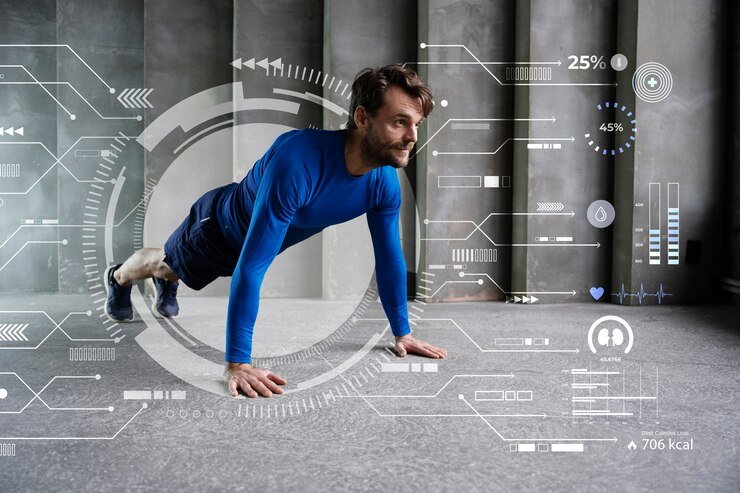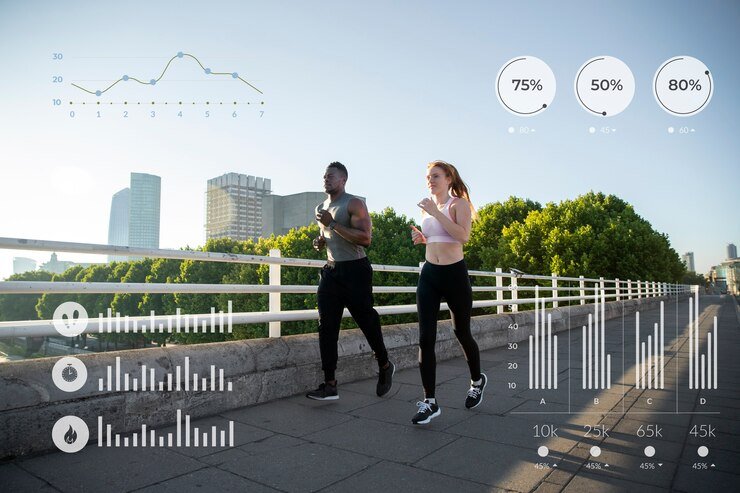
Over the last few years, the use of wearable technology has revolutionized marathon running. For instance, more than 80 percent of the marathon participants in events such as the Boston and London Marathons use wearables. Unlike simple gadgets that monitor an individual’s physical activity, these devices offer specifics on matters touching on heart rate, speed, and even oxygen. Wearable technology in running allows people to train better, avoid injuries, and recover faster. Over time, it has become a necessary part of the lives of casual jogs and professional athletes. This article also discusses how wearable technology is redefining marathon running by looking at endurance monitoring, performance feedback, and recovery feedback.
From Heart Rate Monitors to Smart Clothing
In the eighties, heart rate monitors were considered hi-tech equipment for running. In the present era, smart clothing comes with sensors that are woven into the fabric to gather information on muscular strength, temperature, and water intake. These enable runners to fine-tune their training in a way they could only imagine a decade ago. The leading companies in this innovation include Hexoskin and Sensoria, which are designing clothing that tracks physiological signs instead of using large devices. This technology not only aids in performance enhancement but also in the avoidance of injuries since muscle fatigue can be easily identified. Smart clothing is gradually becoming available to the public, and thus, the use of technology in marathon running will gradually become the new trend that incorporates the comfort of the clothing and the ability to analyze performance.
Endurance Tracking: The Key to Successful Training
Research conducted by the University of Exeter showed that 70% of marathon runners use wearable technology to track their endurance levels. There is a range of gadgets like Garmin Forerunner and Polar Vantage that give information about VO2 max, lactate threshold, and stamina. This information assists the runners in the right planning of the training regimes and thus gradually build up stamina without causing injuries due to overtraining. The potential to compare the results of training obtained at different times enables the trainer to vary the volume and intensity of training. They also provide recovery measures for a runner to determine the best time for the next rigorous training, which in turn improves performance and reduces instances of injuries.

Wearables for Real-Time Performance Analysis
In the 2023 Berlin Marathon, over half the elite runners used real-time performance monitoring devices. These wearables, such as the Stryd power meter and the Apple Watch Ultra, provide instantaneous feedback on metrics like power output, pace, and heart rate variability. This immediate data allows runners to make on-the-fly adjustments to their race strategy, optimizing their effort throughout the marathon. By analyzing this information, athletes can identify inefficiencies in their form and make corrections in real-time. This technology not only enhances race-day performance but also helps in refining training techniques, making every run more efficient and effective.
But today’s technologies make it possible not only to collect data on the state of the body but also to quickly transmit it. But to whom? Maybe it will be the coach, or maybe it will be the spectator in the stands? Imagine how much different watching sports would be if viewers could receive a live report on an athlete’s condition. Perhaps the biggest impact of such an innovation would be on sports betting.
Although it is still impossible to get information about the oxygenation of an Olympic participant on your phone, this does not mean that sports betting is a thing of the last century. The bookmaker Mel Bet also creates opportunities for portable devices – now, you can bet using a smartphone, as well as visual infographics and live statistics for any event. This will help you make a winning choice even without access to data from runners’ pulse oximeters.
Monitoring Stride and Cadence: A Game Changer
The use of real-time performance monitoring devices among elite runners was established to be more than 50% during the Berlin Marathon 2023. These wearables, like the Stryd power meter and Apple Watch Ultra, give real-time feedback on such aspects as power, rate per kilometer, and rate per minute. The real-time data enables the runners to adjust their pace during the run, thus enhancing their strategy for the marathon. From this information, the athletes are able to realize there are areas in which they are not at their best and immediately correct them. It is not only good for race day but especially for preparing for race day and perfecting training methods so that each run is as productive as possible.
Fueling Strategies with Smart Wearables
A study that was published in the Journal of Sports Sciences in 2022 indicated that when the stride length and the rate to which it was repeated were matched, it was possible to enhance the marathon performance by up to 5%. These parameters are measured with great accuracy by wearable devices such as the Lumo Run and the RunScribe. These machines give information such as the length of the stride, the time that the foot spends on the ground, and the time the leg spends in the air so that the runners can get the most efficient way to run. Modifications to these elements can result in a large increase in velocity and stamina. Instant feedback allows the runners to constantly keep a proper form during training sessions and races, minimizing the likelihood of injuries due to poor biomechanics.

Recovery Management: Beyond the Finish Line
High-end wearables are now part of the post-race management system as well. The WHOOP strap and Oura ring track HRV and sleep to give an indication of the recovery state. Therefore, through the tracking of these metrics, runners can be in a position to know when to rest and when to continue exercising. This data avoids creating a situation where the athlete exercises excessively and also makes sure that the athlete has regained his or her strength before the next training session. Moreover, wearables can suggest personalized recovery activities, such as:
- Specific stretches
- Relaxation techniques
- Sleep optimization
- Hydration reminders
It also helps runners achieve lifelong health and performance goals by developing recovery strategies from the obtained data.
Sleep and Stress: The Invisible Factors
Scientists at Stanford University have pointed out that getting sufficient sleep boosts the performance of athletes by as much as 20%. Fitbit and Garmin watches track the amount of sleep that a runner gets and how this affects his or her training. These devices monitor the process of sleep, from deep to REM, and let the user know how the body restores itself at night. Also, wearables track stress through biomarkers such as heart rate variability. By recognizing when stress levels are high, runners can engage in mindfulness techniques or modify the training regimen to avoid exhaustion. Sufficient sleep and low levels of stress lead to better endurance and general health.
Future Innovations: What to Expect
There are great expectations of wearable technology in marathon running in the future. Augmented reality glasses, for example, are expected to bring a new level of training and racing experience. These glasses can display information such as speed, distance, and heart rate on top of the real world, thereby obviating the need to check a wrist-mounted device. Another new feature is the ability of wearables to include expert coaching advice based on users’ data. Also, they predict better biofeedback sensors that will help to monitor the runners’ hydration and electrolyte levels to allow them to have the best form the entire race.
Conclusion: The New Era of Marathon Running with Wearable Tech
Wearable technology has most definitely impacted marathon running in a manner that provides training, performance, and recovery gadgets. Smart clothing to monitor performance, instant feedback, sophisticated methods of recovery, and reimagining of future possibilities are all possible thanks to these devices for runners. With time, wearables shall be integrated into the marathon training in a better way, and this will assist the runners in achieving their optimal potential safely. Thus, this new era in marathon running can bring development not only to the individual level but also to the general understanding of running sports and the processes occurring within an athlete’s body.
Follow https://www.facebook.com/groups/366198032942472 for more interesting news.








